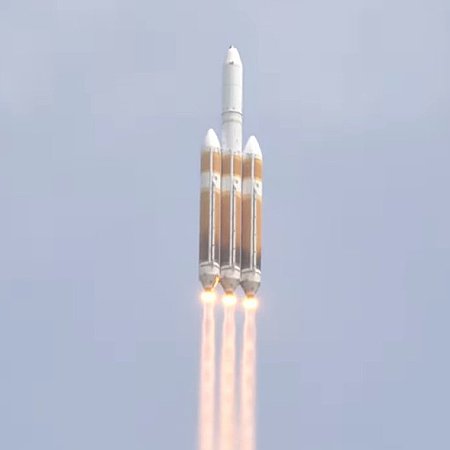The value of Trump’s Abraham Accords once again proven

Even the Arabs recognize these facts.
And they know that Iran is allied with Hamas.
Courtesy of Doug Ross.
Over the weekend the Iranian attempt to bomb Israel drove home starkly the effectiveness of the Abraham Accords that Donald Trump pushed through during his term between Israel and a number of its Arab neighbors.
The effectiveness of the accords was not only illustrated by the moral and technical support given to Israel by the UAE and Bahrain (two accord signatories), the good will these agreements produced between Israel and the Arab world caused other Arab nations to add their own support as well.
First, when Iran tipped off several Arab countries of its intentions — which likely included both Jordan and Saudi Arabia (neither of which has signed the accords) — those countries then immediately passed that information to the United States, knowning full well it would then be passed to Israel. Iran had thought the Arab world was united with it, when in truth at least half the Arab world is now allied with Israel (either overtly or covertly).
Then Jordan denied Iran permission to use its airspace, and then followed this up by first opening its airspace to Israel and American fighter jets. All three then proceeded to shoot down Irans missiles and drones, preventing almost all from even reaching Israel.
The support Saudi Arabia gave to Israel this past weekend suggests once again that it does want to sign the accords as well. Just before the 2020 election there were numerous rumors that it would do so, once Trump was confirmed for a second term. It then backed off when Biden was installed as president, though it also has made it clear in the past three years that it is more aligned with Israel than Iran or the Palestinians. In fact, there is much evidence that many Arab countries in the Middle East are increasingly ready to abandon or seriously curtail their support of the Palestinians, in exchange for a peaceful co-existence with Israel that enhances everyone’s security. All fear Iran, and Israel can help them fight it.
The situation of course remains very complex, but it will simplify enormously after Israel finishes Hamas off and then demonstrates its determination to rebuild Gaza as a sane place for both the Gazans and its neighbors. Despite the absurd screams of “genocide” by stupid Hama supporters, Israel’s neighbors very much want to get Hamas destroyed. They might mouth some complaints about the lose of civilian lifes in Gaza, but those protests are not to be taken very seriously. Hamas has done nothing for them except instill disorder and violence in the region. Remove it, and they know everyone will benefit.

Even the Arabs recognize these facts.
And they know that Iran is allied with Hamas.
Courtesy of Doug Ross.
Over the weekend the Iranian attempt to bomb Israel drove home starkly the effectiveness of the Abraham Accords that Donald Trump pushed through during his term between Israel and a number of its Arab neighbors.
The effectiveness of the accords was not only illustrated by the moral and technical support given to Israel by the UAE and Bahrain (two accord signatories), the good will these agreements produced between Israel and the Arab world caused other Arab nations to add their own support as well.
First, when Iran tipped off several Arab countries of its intentions — which likely included both Jordan and Saudi Arabia (neither of which has signed the accords) — those countries then immediately passed that information to the United States, knowning full well it would then be passed to Israel. Iran had thought the Arab world was united with it, when in truth at least half the Arab world is now allied with Israel (either overtly or covertly).
Then Jordan denied Iran permission to use its airspace, and then followed this up by first opening its airspace to Israel and American fighter jets. All three then proceeded to shoot down Irans missiles and drones, preventing almost all from even reaching Israel.
The support Saudi Arabia gave to Israel this past weekend suggests once again that it does want to sign the accords as well. Just before the 2020 election there were numerous rumors that it would do so, once Trump was confirmed for a second term. It then backed off when Biden was installed as president, though it also has made it clear in the past three years that it is more aligned with Israel than Iran or the Palestinians. In fact, there is much evidence that many Arab countries in the Middle East are increasingly ready to abandon or seriously curtail their support of the Palestinians, in exchange for a peaceful co-existence with Israel that enhances everyone’s security. All fear Iran, and Israel can help them fight it.
The situation of course remains very complex, but it will simplify enormously after Israel finishes Hamas off and then demonstrates its determination to rebuild Gaza as a sane place for both the Gazans and its neighbors. Despite the absurd screams of “genocide” by stupid Hama supporters, Israel’s neighbors very much want to get Hamas destroyed. They might mouth some complaints about the lose of civilian lifes in Gaza, but those protests are not to be taken very seriously. Hamas has done nothing for them except instill disorder and violence in the region. Remove it, and they know everyone will benefit.






